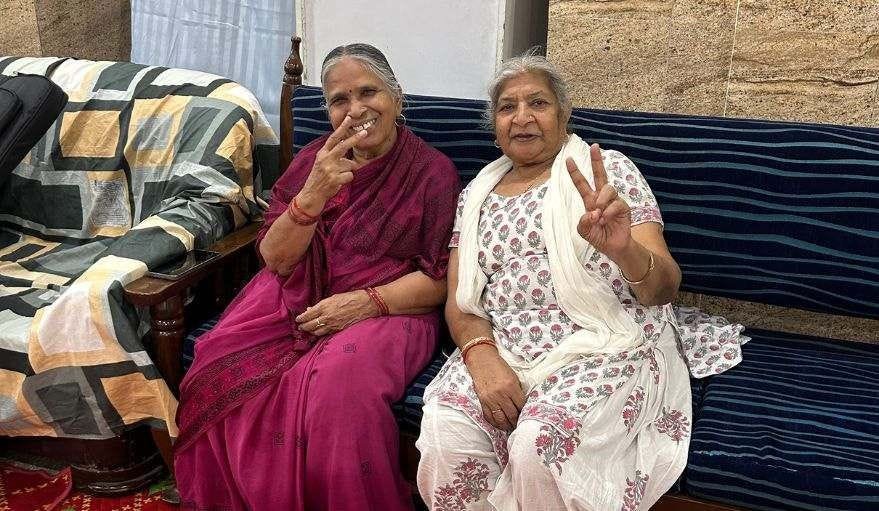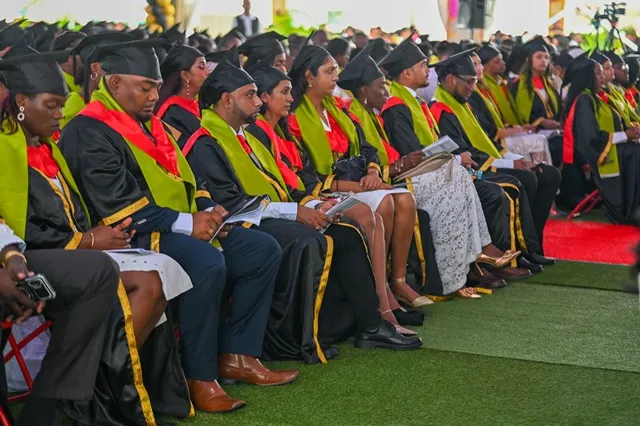Introduction: From Newsrooms to WhatsApp Groups
A breaking news story in Guyana today might not come from a traditional newspaper or TV reporter, but from a citizen armed with a smartphone. During recent floods, it was residents’ live Facebook videos and WhatsApp messages that alerted the nation before any official bulletin. In local communities, citizen-run Facebook pages like “Region 3 News” deliver updates and hold authorities accountable, sometimes faster than mainstream outlets. Guyana’s media landscape is undergoing a grassroots revolution: citizen journalists and new digital platforms are increasingly shaping the flow of information and public discourse.
This is a notable shift in a country where historically a few big media houses (often politically aligned) dominated and where remote regions were under-covered. Now, thanks to widespread social media use – about 528,000 social media users, 63% of the population, as of 2025 – news and opinions circulate in decentralized ways. A fisherman in Essequibo can post a video complaint about a broken pump and spur action; an anonymous blogger can challenge government narratives and get traction.
The PPP/C government’s stance to this new media environment has been a mix of engagement and caution. They recognize the power of citizen journalism in promoting transparency and civic participation, aligning with their talk of inclusive governance. But they’re also wary of misinformation and the loss of narrative control. This article explores how the rise of citizen journalism and social media activism is playing out in Guyana – the benefits, the concerns, and what it means for the country’s democratic fabric.
The Rise of Citizen Journalism
Citizen journalism in Guyana has grown on platforms like Facebook, YouTube, and WhatsApp – which effectively function as news distribution networks now. Key drivers:
- Smartphone penetration increased; even hinterland villagers have at least one Android phone in the community.
- Affordable data (government pressured telecoms to lower rates) meaning folks can live-stream or upload content regularly.
- Public Facebook groups/pages focusing on local issues garnered trust. E.g., “Guyana Uncut” (satirical news commentary channel on YouTube) has tens of thousands of followers; “Kaieteur News WhatsApp group” forwards nightly breaking scoops often sourced from tipsters.
During the contentious 2020 elections, citizen vigilance was crucial – live videos from polling sites and the tally center shone a light on attempts at rigging, rallying international pressure. That saga taught citizens that their voices and camera lenses matter. As a result, now people are quick to document irregularities: a video of a police bribe here, photos of a collapsed road there, often forcing quicker official responses.
We also see organized training: NGOs held workshops on citizen reporting, and some older journalists mentor community correspondents remotely. So quality is improving beyond mere opinion ranting.
The reach of citizen media is significant. A viral Facebook post can reach more eyeballs than a front-page print headline. And it’s interactive: people comment in real-time, tag officials, sometimes provoking immediate replies. In essence, social media serves as both a broadcaster and a public forum.
One striking example: in 2024, a teenage “citizen reporter” from Linden started doing a weekly TikTok summary of town issues – stray dogs menace, water shortages – tagging ministers. It gained such popularity that the local council invited him to present at meetings. This blurring of citizen and official channels is new.
The diaspora also partakes – diaspora Guyanese often consume these citizen-driven updates to stay connected and sometimes contribute investigative leads or resources.
Government’s Balancing Act: Embrace vs. Control
The PPP/C government, unlike some regional counterparts, has not embarked on outright suppression of citizen media. There’s no internet shutdown or new draconian social media law. In fact, President Ali is active on Facebook and often responds to citizen-raised issues (e.g., he might comment under a viral complaint, promising action – a savvy PR move). Ministers frequently use social media to push information, cognizant that the old DPI press release alone won’t cut it.
They’ve also included social media influencers in outreach – for instance, inviting a few outspoken Facebook personalities to press briefings or consultations. This inclusion lends legitimacy to citizen voices.
However, the government is also investing in countering disinformation. They are aware of cases where rumors spread on WhatsApp (like a false scare about vaccine side-effects or election-related fake news) that could cause harm. The approach has been to push official info swiftly on those same platforms to debunk and drown out falsehoods, rather than censor the platform.
Yet, some tension exists. Officials occasionally lash out at what they call “social media mischief makers.” There have been instances of individuals being charged under cybercrime laws for slanderous posts (e.g., someone who made a baseless accusation of corruption against a minister on Facebook faced legal action). Groups like CIVICUS flagged rising hostility to critical independent media. So it’s not an open paradise; defamation laws still apply, and the powerful don’t shy from suing if they feel wronged by online content.
Notably, the Freedom of Information Act is being better utilized thanks to citizen awareness – activists file FOI requests and then publish data on social media, a form of citizen investigative journalism. The government, to its credit, has responded to more FOIs lately, showing some commitment to transparency.
A concern, however, is the proliferation of anonymous political propaganda pages – on both sides – that muddy discourse. The PPP has its share of supportive troll pages amplifying its achievements and attacking opponents; the opposition does similarly. It’s part of modern politics. Government hasn’t cracked down on those aligned to it, obviously, so in the citizen media space one must navigate propaganda mines. Savvy readers cross-verify with known credible citizen sources.
The upshot is, the government seems to accept citizen journalism as an inevitable evolution, choosing to engage and attempt to influence it rather than shut it. They likely realize a heavy hand would backfire and tarnish the democratic credentials they want to uphold.
Impact on Accountability and Governance
There’s little doubt that this new media landscape enhances accountability:
- Local issues get national attention: When residents in a hinterland village posted videos of an ailing health post lacking medicine, it went viral; the Health Minister responded by airlifting supplies next day. Before, that village might suffer in silence.
- Corruption exposure: We’ve seen a few mid-level public officers caught in sting-like videos taking bribes. These circulate quickly and authorities are forced to act to save face. It also deters others who know cameras could be anywhere.
- Citizen feedback loops: Policies can be rapidly assessed by public reaction on social channels. Government often floats ideas and gauges comment sentiment. It’s an informal referendum of sorts. For example, a proposed change in traffic fines faced massive social media outcry as too harsh; the govt revised the proposal, referencing the feedback. That kind of responsiveness, albeit selective, is more pronounced now.
The mainstream media too have adjusted; newspapers monitor social media for leads. Sometimes the Stabroek News or Guyana Chronicle stories the next day are essentially fleshed out versions of what broke on Facebook the day before.
However, the barrage of information has its downside: verifying the truth is harder for the public when everyone’s a reporter. There have been viral false alarms (like a fake kidnapping rumor) that caused panic. This tests the state’s emergency comms – they’ve since set up faster rumor control via the Public Information arm.
Another challenge: while citizen journalism is loud in pointing out problems, it might not always follow through or provide balanced context. It’s often fragmentary. This is where professional journalism still matters to do deeper investigation beyond a viral clip. An ideal synergy is emerging where citizens highlight, traditional journalists investigate further, and both keep the system in check.
There’s also the matter of training citizens in basic media ethics – some NGOs (e.g., Guyana Press Association) have been calling for more digital literacy programs so people know how to consume and share news responsibly, avoiding becoming vectors of misinformation unwillingly.
Cultural Shifts: Everyone’s a Publisher
The ubiquity of citizen media has, in a sense, democratized freedom of expression in Guyana. Voices historically marginalized (like women in remote areas, Indigenous communities, youth) can broadcast their perspective widely now. For instance, a young Amerindian activist on Twitter regularly educates on indigenous land rights issues and draws attention from policymakers – something unimaginable when only capital-based media set the agenda.
Citizen media is also strengthening community identity. Many regions have their own Facebook pages or YouTube channels highlighting local culture, which fosters pride and cross-cultural awareness. A clever example was a series of vlogs by a Rupununi youth showing a day in the life in her village – these gained thousands of views, bridging urban-rural understanding.
The public has become more participatory in governance debates. Instead of passively hearing news, they comment, petition online, start hashtags. When a major issue arises – say, the Guyana-Venezuela border tension – you see robust discussion on social platforms, some of it quite informed, as diaspora experts chime in directly. It’s a more engaged citizenry albeit one that might occasionally veer into toxic comment wars (moderation of hateful or inciting speech remains tricky).
Interestingly, political leaders themselves sometimes leak info via social media to gauge reaction or push narratives. It’s a new battleground and marketplace of ideas, and citizens are equal players.
Media literacy remains a need – the government and civil society have begun campaigns on “think before you click” emphasizing verifying news from multiple sources. The aim is to inoculate the public against malicious fake news which, if unbridled, could cause unrest (as seen elsewhere in world).
The Road Ahead: Coexistence of Citizen and Traditional Media
Will citizen journalists replace traditional ones? Likely not entirely – rather a complementary coexistence is forming in Guyana. Traditional media still provide in-depth reports, formal interviews, and editorial standards (the best of them, anyway). Citizen media provides immediacy, ground truth, and plural voices. Together they create a richer media ecosystem.
The PPP/C in its manifesto even hinted at supporting community radio and training citizen reporters (though with caution of not funding propaganda). There’s an opening to formalize support for hyperlocal journalism perhaps via grants or technical aid, similar to how they support creative industries. But any state support must be at arm’s length to avoid co-option.
One interesting development to watch: the emergence of online-only independent news outlets (like OilNOW for the oil sector, or new blogs covering politics). These often blend professional reporting with digital agility. If they gain traction, they add another layer beyond personal citizen pages.
In any event, the genie is out of the bottle. Guyanese society has tasted this empowerment in storytelling and watchdogging. It aligns well with a modern democratic vision – an informed, vocal populace engaging in governance. It keeps politicians on their toes far more than the old days when controlling a few media houses could shape narratives. Now a misstep in a remote corner can become a national scandal by nightfall via Facebook. Arguably this pushes leaders to perform better.
However, it also means false narratives can quickly sow division if not checked. Maintaining societal cohesion in the age of social media is a challenge globally, and Guyana’s ethnic political fractures could be exacerbated by malicious online actors if not careful. Thus the need for continued vigilance and digital civility initiatives.
Conclusion: Power to the People’s Pen (and Camera)
The rise of citizen journalism in Guyana is one of the more heartening aspects of its transformation – it indicates a maturing civil society where people are not only beneficiaries of development but active shapers of it. It dovetails with the PPP/C’s emphasis on participatory governance (their “One Guyana” ideal encourages every voice). While certainly the government might prefer only positive voices, they have thus far weathered the critical ones without extreme clampdown, which strengthens democratic norms.
For the average citizen, there’s a sense of agency: that if they see wrongdoing, they can call it out publicly and something might be done. That feeling is empowering and breaks a culture of resignation. It also fosters a collective problem-solving dynamic – people often suggest solutions in comment threads, connect resources, etc., essentially crowdsourcing governance support.
To sum up, Guyana’s information sphere is no longer top-down, but a multifaceted conversation in which citizens play a bigger role than ever. The old media guard and the new citizen scribes are figuring out their interplay, and if managed well, the country will be better informed and more resilient for it.
In a time where around the world trust in media is shaky, Guyana’s experience shows that trust can be built horizontally – people trust those they know or who are like them (citizens) perhaps more than institutions. By encouraging responsible citizen journalism and adapting to this new reality, Guyana could strengthen its democracy in the process.
As one media veteran told me, “In Guyana now, every phone is a newsroom and every citizen a journalist. And that’s a good thing, as long as truth remains the editorial line.”




